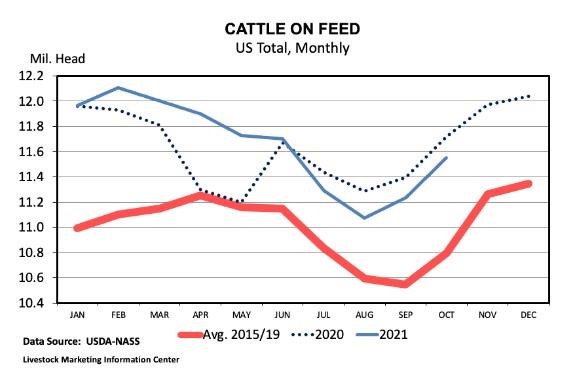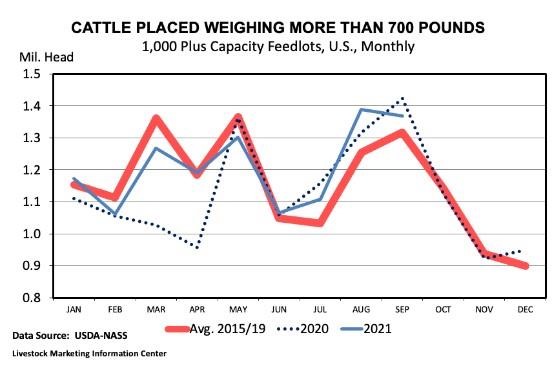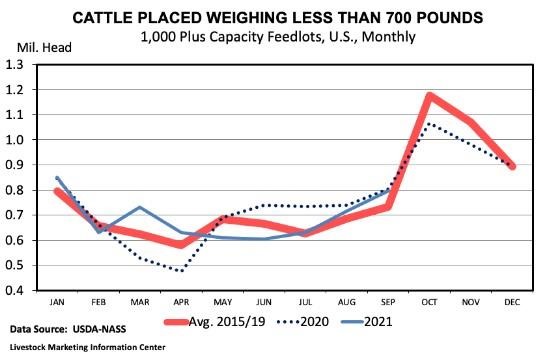By James Mitchell
USDA released the October Cattle on Feed report on Friday, October 22nd. The October 1st estimate for cattle on feed inventories for feedlots with a capacity of 1,000 head or more totaled 11.6 million, a 1.4 percent decline from last year. This month’s report is the fourth consecutive month with cattle on feed inventories below 2020. However, feedlot inventories remain 2.3 percent above 2019 levels. Overall, the feedlot situation continues to improve, albeit slower than many of us might have predicted earlier this year.

The placement data continues to provide critical insights for our fall calf market and future beef production. September feedlot placements totaled 2.163 million, a 2.9 percent decline from last year. Regionally, compared to 2020, September placements were 11 percent higher in Iowa, 3 percent higher in Kansas, 10 percent higher in Oklahoma, 10 percent lower in Colorado, and 9 percent lower in Nebraska. September placements in Texas and Minnesota were comparable to 2020. Three factors are contributing to the year-over-year decline in feedlot placements for September.
First, 2020 was the highest September placement since 2011, reflecting the pandemic-related disruptions to feedlot placements earlier that year. We are comparing September placements to a large number for 2020. Second, drought pressure across the country likely forced some cattle into feedlots earlier than anticipated. The first figure below, which shows feedlot placements of cattle weighing more than 700 pounds, illustrates this point. Seasonally, we would expect an increase in placements of heavier feeder cattle in September compared to August. This year, it appears that the seasonal peak in feeder cattle placements occurred one month earlier than normal seasonal dynamics might predict. Finally, we have observed three consecutive years of declining calf crops (based on data from July). It will become more apparent that we have tighter feeder cattle supplies as we move into 2022. In addition to the three factors just described, feed costs will also impact the relative value of cattle in different weight classes.


Source : osu.edu